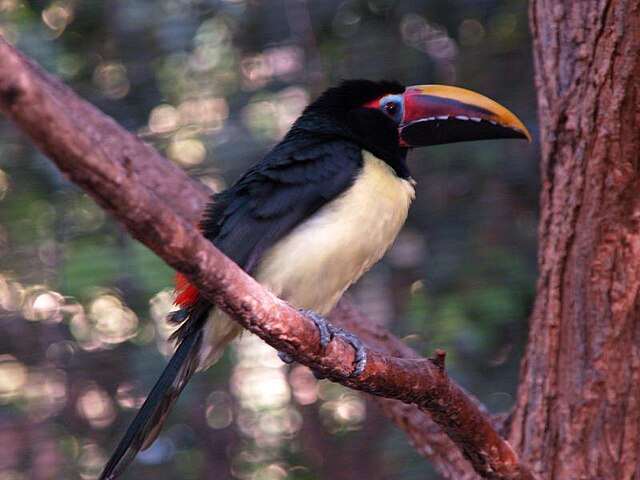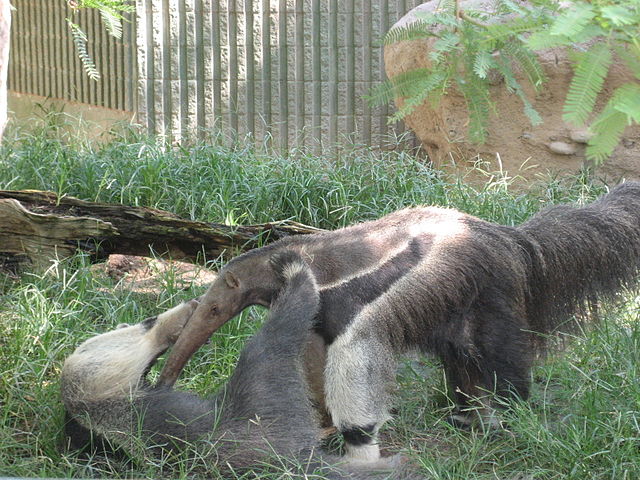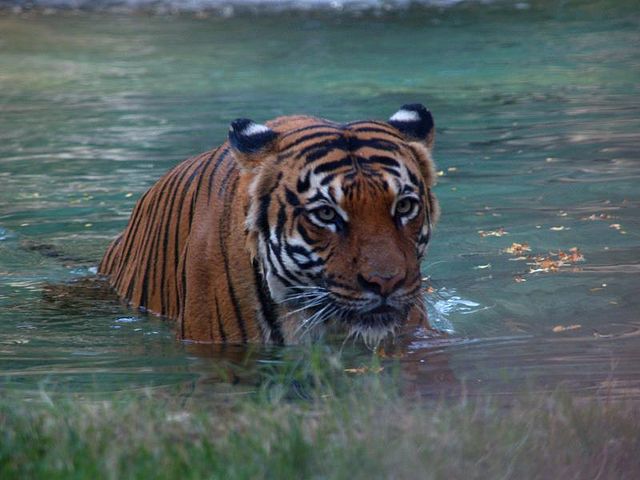Have you ever wondered what it feels like to come face-to-face with a majestic African elephant or watch playful otters splash around in crystal-clear water? Reid Park Zoo in Tucson, Arizona, offers these magical moments and so much more. This beloved 24-acre wildlife sanctuary has been captivating visitors for decades, creating unforgettable memories for families, animal lovers, and adventure seekers alike.
Nestled in the heart of Tucson’s Reid Park, this incredible zoo houses over 500 animals representing more than 150 species from around the globe. Whether you’re a local looking for weekend fun or a tourist exploring Arizona’s treasures, Reid Park Zoo promises an experience that’s both educational and exhilarating.
What Makes Reid Park Zoo Special?
Reid Park Zoo isn’t just another animal attraction – it’s a conservation powerhouse with a heart. What sets this zoo apart from others is its intimate atmosphere that allows for up-close animal encounters while maintaining world-class care standards. Unlike massive zoos where you might feel overwhelmed, Reid Park Zoo offers a perfect balance of variety and walkability.
The zoo’s commitment to conservation, education, and research makes every visit meaningful. You’re not just observing animals; you’re supporting global wildlife protection efforts. Plus, the zoo’s location in sunny Tucson means you can enjoy outdoor animal watching year-round, with over 300 days of sunshine annually!
A Brief History of Reid Park Zoo
Reid Park Zoo opened its gates in 1967 with humble beginnings – just a few farm animals and a dream to educate the community about wildlife. What started as a small petting zoo has evolved into a nationally recognized zoological facility. Over the years, the zoo has undergone significant expansions, including the addition of the South American exhibit in 2016, which doubled the zoo’s size.
The zoo’s growth reflects Tucson’s commitment to wildlife conservation and education. From housing rescued animals to participating in international breeding programs, Reid Park Zoo has become a beacon of hope for endangered species worldwide.
Location and Getting There
Finding Reid Park Zoo couldn’t be easier! Located at 3400 E Zoo Court in Tucson, the zoo sits within the larger Reid Park complex, which also features golf courses, a lake, and recreational facilities. If you’re driving, take the 22nd Street exit from I-10, and you’ll find yourself there in no time.
The zoo’s central location makes it accessible from anywhere in Tucson, typically requiring no more than a 20-minute drive from most parts of the city. Public transportation options include several bus routes that stop near Reid Park, making it convenient for families without vehicles.
Top Animal Exhibits You Can’t Miss

Ready to meet some incredible animals? Reid Park Zoo’s exhibits are designed to transport you to different corners of the world, each offering unique experiences and learning opportunities.
African Elephant Habitat
The crown jewel of Reid Park Zoo is undoubtedly the African Elephant habitat. Home to a small herd of these gentle giants, this expansive exhibit features a large pool, multiple viewing areas, and plenty of space for the elephants to roam. Watching these magnificent creatures splash in the water or interact with their enrichment activities is absolutely mesmerizing.
The habitat’s design mimics the African savanna, complete with acacia trees and natural substrates. Don’t miss feeding time – it’s incredible to witness the elephants’ intelligence as they use their trunks with remarkable precision. The viewing deck offers perfect photo opportunities, especially during golden hour when the Arizona sun creates magical lighting.
Big Cat Territory
Feel your heart race as you encounter the powerful residents of Big Cat Territory. This exhibit houses jaguars, mountain lions, and other impressive felines in naturalistic habitats that showcase their incredible agility and beauty. The elevated walkways provide multiple vantage points, ensuring you catch these magnificent predators in action.
Each habitat is specifically designed for its residents’ needs, featuring climbing structures, water features, and hiding spots that encourage natural behaviors. The jaguars, in particular, are known for their swimming abilities – a rare trait among big cats that makes for spectacular viewing.
Reptile Walk
Think reptiles are boring? Think again! The Reptile Walk at Reid Park Zoo will completely change your perspective on these fascinating creatures. Housing everything from tiny colorful lizards to massive pythons, this exhibit showcases the incredible diversity of the reptile world.
The walk-through design allows you to observe these animals at eye level, creating intimate encounters you won’t find elsewhere. Interactive displays provide fascinating facts about reptile biology, behavior, and conservation status. Kids especially love the hands-on learning stations where they can touch snake skins and turtle shells.
Flight Connection Aviary
Step into a tropical paradise at the Flight Connection Aviary, where hundreds of colorful birds fly freely around you. This immersive walk-through experience makes you feel like you’ve been transported to a South American rainforest. From tiny hummingbirds to large toucans, the variety of species is astounding.
The aviary’s lush vegetation and cascading waterfalls create a serene atmosphere that’s perfect for photography and quiet observation. Benches throughout the exhibit provide spots to sit and watch the birds’ natural behaviors up close. Don’t be surprised if a friendly bird lands near you – it’s all part of the magic!
South American Animals
The newest addition to Reid Park Zoo, the South American exhibit, showcases the incredible biodiversity of the Amazon and surrounding regions. Here you’ll meet playful giant otters, curious capybaras, and colorful macaws. The exhibit’s design incorporates authentic South American architecture and landscaping.
The otter habitat is particularly popular, featuring a large swimming area with underwater viewing windows. Watching these playful mammals dive and swim is endlessly entertaining. The capybara exhibit often draws crowds too – these gentle, oversized guinea pig relatives have surprisingly charming personalities.
Planning Your Visit

Timing is everything when it comes to maximizing your zoo experience. Here’s what you need to know to plan the perfect visit.
Best Times to Visit
Arizona’s desert climate means timing your visit strategically can make all the difference. The best times to visit Reid Park Zoo are during the cooler months from October through April when temperatures are comfortable for both visitors and animals. Early morning visits (right when the zoo opens) offer several advantages: cooler temperatures, more active animals, and smaller crowds.
If you’re visiting during summer months, plan to arrive early and take advantage of shaded areas and indoor exhibits during the hottest part of the day. Many animals are more active during cooler morning and evening hours, so you’ll see more interesting behaviors during these times.
Ticket Prices and Admission
Reid Park Zoo offers excellent value for families with reasonable admission prices that support conservation efforts. Adult tickets typically range from $15-20, with discounts available for children, seniors, and military personnel. Annual memberships provide significant savings for local families and include perks like free parking and guest passes.
The zoo frequently offers special promotions and discounts, especially during slower seasons. Check their website or social media pages before your visit for current deals. Group rates are available for parties of 15 or more, making it perfect for school trips or family reunions.
Parking Information
Parking at Reid Park Zoo is convenient and affordable, with several lots surrounding the facility. The main parking area is directly adjacent to the zoo entrance, though it can fill up quickly during peak times and special events. Additional parking is available in the broader Reid Park area, requiring just a short walk to the zoo entrance.
Parking fees are modest, typically around $5 per vehicle. Annual pass holders often receive complimentary parking as part of their membership benefits. Arrive early during weekends and holidays to secure the best parking spots.
Family-Friendly Activities and Programs
Reid Park Zoo goes beyond simple animal viewing, offering engaging programs and activities that make learning fun for visitors of all ages.
Educational Programs
The zoo’s education department offers an impressive array of programs designed to inspire the next generation of conservationists. From toddler classes that introduce young children to animals through songs and stories, to advanced programs for teenagers interested in veterinary careers, there’s something for every age group.
School field trip programs align with educational standards and provide hands-on learning experiences that textbooks simply can’t match. Summer camps are particularly popular, offering week-long adventures where kids get behind-the-scenes access and work directly with zookeepers. Adult education programs cover topics like photography, wildlife conservation, and animal behavior.
Birthday Parties and Special Events
Looking for a unique way to celebrate a special occasion? Reid Park Zoo offers birthday party packages that create unforgettable memories. Party options include private animal encounters, guided tours, and access to party pavilions. The zoo’s party coordinators handle all the details, allowing you to focus on enjoying the celebration.
Special events throughout the year, such as “Boo at the Zoo” during Halloween and “Zoo Lights” during the holiday season, transform the facility into magical wonderlands. These events often feature extended hours, special activities, and unique photo opportunities that you won’t find during regular visits.
Zoo Train Adventure
All aboard the Reid Park Zoo train! This charming narrow-gauge railroad takes visitors on a scenic journey around the zoo’s perimeter, offering unique perspectives of animal habitats and beautiful desert landscaping. The train ride is perfect for families with young children or visitors who want to rest their feet while still enjoying the zoo experience.
The train operates on weekends and during peak seasons, with regular departures throughout the day. Commentary during the ride provides interesting facts about the zoo’s history and conservation efforts. It’s also an excellent way to get an overview of the zoo layout before exploring on foot.
Dining and Shopping Options
A day at the zoo works up an appetite, and Reid Park Zoo has you covered with various dining options to suit different tastes and budgets.
Food Courts and Cafes
The zoo’s main café offers a variety of options from quick snacks to full meals. Menu items include everything from traditional zoo fare like hot dogs and nachos to healthier options like salads and wraps. The outdoor seating areas provide pleasant spots to refuel while watching nearby animal exhibits.
Vending machines throughout the zoo provide convenient access to cold drinks and snacks. During special events, additional food vendors often set up shop, offering everything from kettle corn to snow cones. The zoo also allows visitors to bring their own food and drinks, with picnic areas available for families who prefer to pack their own meals.
Gift Shop Treasures
No zoo visit is complete without stopping by the gift shop! Reid Park Zoo’s retail store features an impressive selection of animal-themed merchandise, from plush toys and t-shirts to educational books and games. Many items are unique to Reid Park Zoo, making them perfect souvenirs or gifts for animal lovers.
The shop also stocks conservation-themed items, with proceeds supporting the zoo’s wildlife protection efforts. Kids particularly love the selection of stuffed animals representing their favorite zoo residents. The shop’s book section includes field guides, children’s stories, and adult non-fiction about wildlife and conservation.
Accessibility and Visitor Services
Reid Park Zoo is committed to ensuring all visitors can enjoy the wildlife experience, regardless of physical abilities or special needs.
The zoo features paved pathways throughout most exhibits, making navigation easy for wheelchairs, strollers, and mobility devices. Wheelchair rentals are available at the entrance for visitors who need them. Most viewing areas include accessible options, and staff members are always available to provide assistance or answer questions about accessibility features.
Family restrooms with changing tables are located throughout the zoo, and nursing mothers will find quiet, comfortable spaces for feeding infants. The visitor services desk can provide large-print maps and other accommodations as needed. Service animals are welcome throughout the facility.
Conservation Efforts and Mission

Reid Park Zoo’s impact extends far beyond its 24 acres, with conservation efforts reaching around the globe to protect endangered species and their habitats.
Breeding Programs
The zoo participates in numerous Species Survival Plans (SSPs), cooperative breeding programs designed to maintain genetic diversity in endangered species populations. These programs involve careful coordination between zoos worldwide to ensure healthy, sustainable populations of threatened animals.
Reid Park Zoo has achieved notable success in breeding several species, including jaguars and various bird species. Baby animals born at the zoo often stay to become part of the breeding program or are transferred to other accredited facilities to start new family groups. These efforts contribute directly to species conservation and recovery.
Wildlife Protection Initiatives
Beyond breeding programs, Reid Park Zoo supports field conservation projects in countries where their animal residents originate. Financial support goes toward anti-poaching efforts, habitat restoration, and community education programs in places like South America and Africa.
The zoo also participates in wildlife rehabilitation efforts locally, working with Arizona Game and Fish Department to care for injured native animals. Educational programs emphasize the connection between local conservation actions and global wildlife protection, inspiring visitors to make environmentally conscious choices in their daily lives.
Tips for the Perfect Zoo Visit
Want to make the most of your Reid Park Zoo adventure? Here are insider tips from seasoned visitors and zoo staff.
What to Bring
Arizona’s desert climate requires some preparation. Bring plenty of water – staying hydrated is crucial, especially during warmer months. Sunscreen and hats are essential year-round due to the intense desert sun. Comfortable walking shoes are a must, as you’ll be covering quite a bit of ground on varied terrain.
A small backpack or tote bag is handy for carrying water, snacks, and any purchases from the gift shop. Don’t forget your camera or smartphone – you’ll want to capture those special animal encounters! Binoculars can enhance your viewing experience, especially for birds and distant animals.
Photography Guidelines
Reid Park Zoo welcomes photographers of all skill levels, from smartphone snappers to professional wildlife photographers. Flash photography is prohibited in most indoor exhibits and around certain animals that might be sensitive to bright lights. Tripods are generally allowed but shouldn’t block pathways or viewing areas.
Early morning and late afternoon provide the best lighting conditions for photography. Animals are often most active during these cooler periods, providing better opportunities for action shots. Respect barriers and never attempt to get closer to animals for photos – both for your safety and the animals’ wellbeing.
Nearby Attractions in Tucson
Your Reid Park Zoo visit can easily be part of a larger Tucson adventure. Reid Park itself offers additional recreational opportunities, including a rose garden, golf courses, and a lake perfect for picnicking. The nearby Tucson Botanical Gardens provides a beautiful complement to your wildlife experience.
Downtown Tucson, just a short drive away, features historic districts, museums, and excellent southwestern cuisine. The Arizona-Sonora Desert Museum, while technically outside the city, offers another world-class wildlife experience focusing on desert ecosystems. Saguaro National Park provides hiking opportunities and showcases the iconic cacti that define the Sonoran Desert landscape.
Conclusion
Reid Park Zoo offers an incredible blend of wildlife encounters, educational experiences, and conservation awareness that creates lasting memories for visitors of all ages. From the majesty of African elephants to the playful antics of river otters, every exhibit tells a story of nature’s remarkable diversity and the importance of protecting it for future generations.
Whether you’re a Tucson local looking for a weekend adventure or a tourist exploring Arizona’s attractions, Reid Park Zoo provides exceptional value and experiences that go far beyond typical animal viewing. The zoo’s commitment to conservation, education, and visitor satisfaction makes it a destination worth visiting again and again.
Plan your visit today and discover why Reid Park Zoo has been Tucson’s beloved wildlife destination for over five decades. Every ticket purchased supports global conservation efforts, making your fun day out a meaningful contribution to wildlife protection worldwide.
Frequently Asked Questions
Q: How long should I plan to spend at Reid Park Zoo?
A: Most visitors spend 3-4 hours exploring all exhibits comfortably. Families with young children might want to allow extra time for breaks and educational activities. If you’re participating in special programs or attending feeding demonstrations, plan for a full day.
Q: Can I bring my own food and drinks into the zoo?
A: Yes! Reid Park Zoo allows visitors to bring their own food and non-alcoholic beverages. Picnic areas and benches throughout the zoo provide comfortable spots to enjoy your own meals. Glass containers and alcoholic beverages are prohibited for safety reasons.
Q: Are pets allowed at Reid Park Zoo?
A: Only service animals are permitted inside Reid Park Zoo. This policy protects both the zoo animals and visiting pets from potential stress or health risks. Pet boarding facilities are available in the Tucson area if you’re traveling with pets.
Q: What happens if it rains during my visit?
A: Reid Park Zoo remains open during light rain, and many exhibits have covered viewing areas. However, outdoor exhibits may temporarily close during severe weather for safety reasons. Check the zoo’s website or call ahead if weather conditions look questionable.
Q: Does Reid Park Zoo offer annual memberships?
A: Yes! Annual memberships provide unlimited admission, free parking, discounts on education programs and gift shop purchases, and reciprocal benefits at other accredited zoos nationwide. Memberships pay for themselves quickly and support the zoo’s conservation mission year-round.

